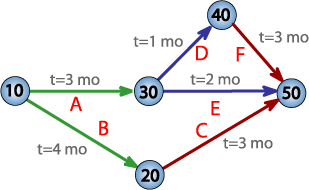If you're looking to take the PMP exam, there are several definitions you need to know. You MUST know and understand the definitions listed in the table below. The exam won't come right out and ask you "What does Actual Cost mean?" The questions are more like: "What kind of Variance do you have on a deliverable if the Earned Value is $75,000 and the Actual Cost is $77,000?� I won’t tell you the answer. I will, however, tell you how to figure it out. Cost Variance (CV) = Earned Value (EV) - Actual Cost (AC). A negative cost variance means you are over budget. A positive cost variance means you are under budget.
| Term | Acronym | Definition |
| AC | Actual Cost | What is the actual cost realized from the work completed. |
| BAC | Budget at Completion | How much was budgeted for the total project? |
| EAC | Estimate at Completion | What is currently the expected TOTAL cost of the project? |
| ETC | Estimate to Complete | From this point on, how much MORE is it expected to cost to finish the project? |
| EV | Earned Value | What is the estimated value of the work actually completed? |
| PV | Planned Value | What is the estimated value of the work planned to be completed? |
| VAC | Variance at Completion | How much over or under budget is the project expected to be at the end? |



 Critical Path Method includes determining the longest path in a network diagram and the earliest and latest an activity can start and the earliest and the latest that activity can be completed. Here are a few basic things you need to think about.
Critical Path Method includes determining the longest path in a network diagram and the earliest and latest an activity can start and the earliest and the latest that activity can be completed. Here are a few basic things you need to think about.